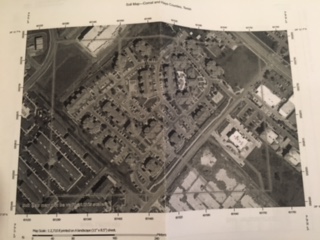Bacillus Unknown
Classification
Domain : Bacteria
Division/phylum: Firmicutes
Class: Bacilli
Order: Bacillales
Family: Bacillaceae
Genus: Bacillus
Species: B. safensis
Species
|
NCBI: Taxonomy |
Genus species
- Terrabacteria Group
Molecule Type
- Nucleic Acid
Habitat Information
- Types of Soil Organism was Found In:
Heiden Clay, 5-8% slopes, eroded (most common) Houston Black Clay, 1-3% slopes
Air Temp: 83 Degrees Fahrenheit/ 28 Degrees Celsius Humidity: 32 % 24 hr. Rainfall: 0.00in Pressure: 30.11 in/ 1018.5mb (sea level) Solar Radiation: 22.49 (mj/m^2) Wind at 4am: 2.06mph Wind at 4pm: 2.77mph
- Soil Location Description:
Soil was taken from directly under a tree at Cabana Beach Apartments in San Marcos, Texas. This area is a very open area and gets water daily from sprinklers. The water it gets daily is minimal, so it does dry quickly. The soil was a very dark brown color. Had almost a dry dirt look and feel to it.
Description and Significance
- Description:
Whiteish color, shiny, raised and semi flat
Most common similar Bacteria: Bacillus Safensis:
Bacillus Safensis is a Gram-positive, spore-forming rod bacterium. Bacillus safensis is also an aerobic, chemoheterotroph. Cell size ranges from 0.5-0.7 μm in diameter and 1.0-1.2 μm in length. Bacteria are motile, and use polar flagella for locomotion. Cells are considered mesophillic, as they can grow in temperatures ranging between 10-50 °C
It was first discovered in California and Florida on spacecraft and so is believed to have been brought to the USA from Mars. There are numerous strains of this bacterium, everyone belonging to the Firmicutes phylum of Bacteria. This organism is significant because it can tell us a bit about other planets and also how the bacteria spreads. It is also resistant to UV rays, gamma rays and is highly salt resistant, therefore it makes for a great plant growth-promoting rhizobacteria.
Genome Structure
DNA Sequencing Results: ""CCACCTGTCACTCTGTCCCCGAAGGGAAAGCCCTATCTCTAGGGTTGTCAGAGGATGTCAAGACCTGGT AAGGTTCTTCGCGTTGCTTCGAATTAAACCACATGCTCCACCGCTTGTGCGGGCCCCCGTCAATTCCTTTGAGTTTCAGT CTTGCGACCGTACTCCCCAGGCGGAGTGCTTAATGCGTTAGCTGCAGCACTAAGGGGCGGAAACCCCCTAACACTTAGCA CTCATCGTTTACGGCGTGGACTACCAGGGTATCTAATCCTGTTCGCTCCCCACGCTTTCGCTCCTCAGCGTCAGTTACAG ACCAGAGAGTCGCCTTCGCCACTGGTGTTCCTCCACATCTCTACGCATTTCACCGCTACACGTGGAATTCCACTCTCCTC TTCTGCACTCAAGTTTCCCAGTTTCCAATGACCCTCCCCGGTTGAGCCGGGGGCTTTCACATCAGACTTAAGAAACCGCC TGCGAGCCCTTTACGCCCAATAATTCCGGACAACGCTTGCCACCTACGTATTACCGCGGCTGCTGGCACGTAGTTAGCCG TGGCTTTCTGGTTAGGTACCGTCAAGGTGCGAGCAGTTACTCTCGCACTTGTTCTTCCCTAACAACAGAGCTACGATC CGAAAACCTTCATCACTCACGCGGCGTTGCTCCGTCAGACTTTCGTCCATTGCGGAAGANTCCCTACTGCTGCCTCCCGT ANGAGTACTGGCCG ""
- Species Most Similar:
- Bacillus Zhangzhouensis Strain Tr91C - Bacillus Zhangzhouensis Strian KBA10 - Bacillus Pumilus - Bacillus Safensis - Uncultured Bacillus
Lab Test Results
Phenol Red Broth: Glucose: positive, Sucrose: negative, Lactose: negative
Starch Hydrolysis: positive
Casein Hydrolysis: positive
Gelatin Hydrolysis: positive
DNA Hydrolysis: positive
Lipid Hydrolysis: positive
Methyl Red: negative
Voges-Proskauer: negative
Citrate Test: weak positive
Sulfur Reduction: negative
Indole Production: negative
Motility Test: positive
Nitrate Reduction: negative
Urea Hydrolysis: negative
Triple Iron Sugar: negative
Mannitol Salt Agar: positive
Blood Agar: positive
Interpretation of Results
Based on results from tests performed in the microbiology lab, we were able to gather the following information about the soil organism:
Biochemical characteristics: Phenol Red test results report that the soil organism ferments glucose. Citrate test results report that the soil organism has a slight ability to use citrate as its only carbon source. Motility test results report that the soil organism is motile. Mannitol Salt Agar results report that the soil ferments mannitol. Blood Agar results report that the soil organism breaks down red blood cells.
Enzymes made: Soil organism produces amylase, casease, gelatinase, DNAse, lipase and catalase enzymes.
References
1. [Branquinho R, Sousa C, Lopes J, Pintado ME, Peixe LV, Osório H. Differentiation of Bacillus pumilus and Bacillus safensis Using MALDI-TOF-MS. Desvaux M, ed. PLoS ONE. 2014;9(10):e110127. doi:10.1371/journal.pone.0110127.]
2. [1] Bacillus safensis. (2015, May 5). In Wikipedia, The Free Encyclopedia. Retrieved 20:41, May 8, 2015, from http://en.wikipedia.org/w/index.php?title=Bacillus_safensis&oldid=660912220]
Author
Page authored by Kendahl Thomas and Sarah Perez, students of Prof. Kristine Hollingsworth at Austin Community College.



